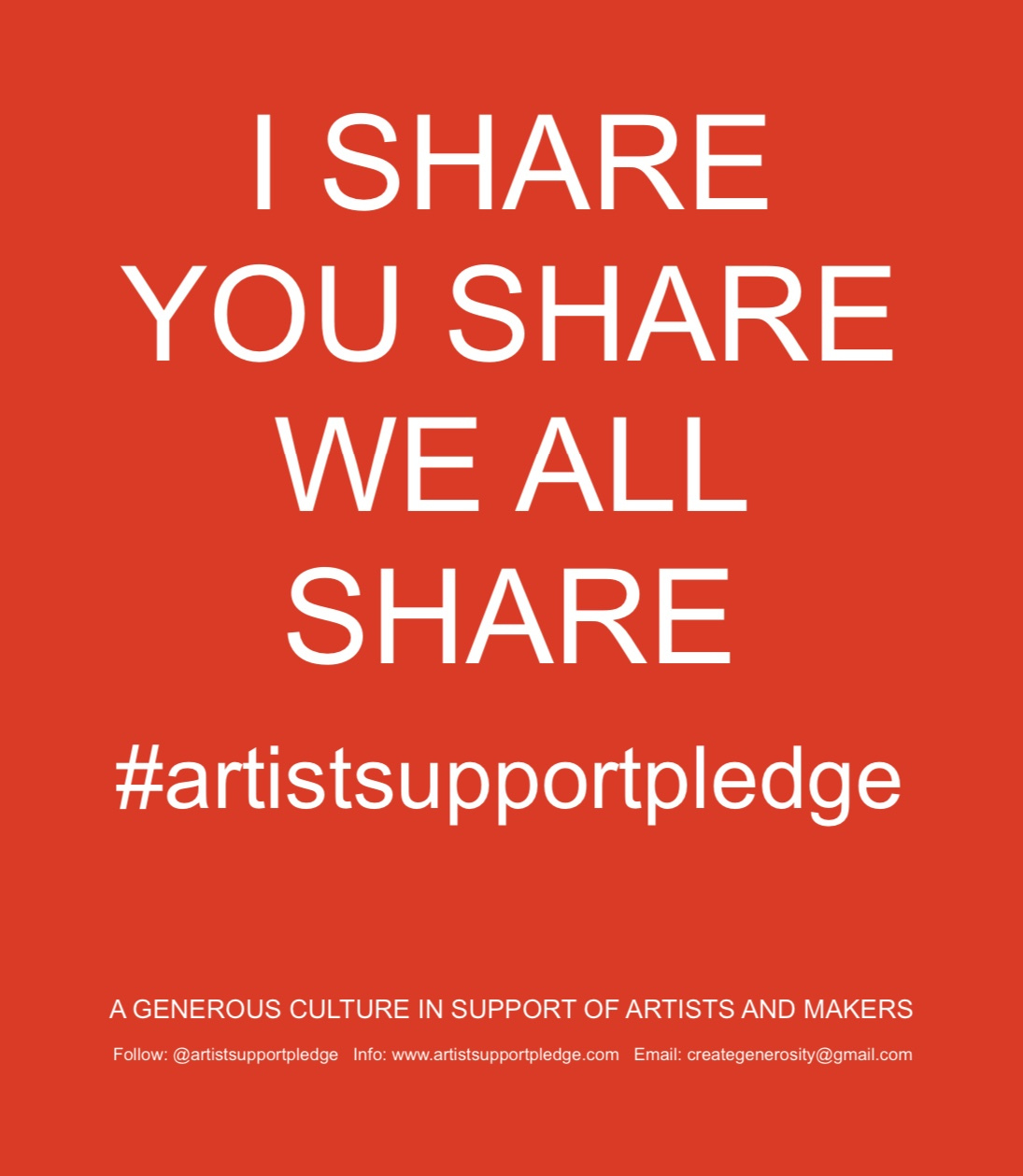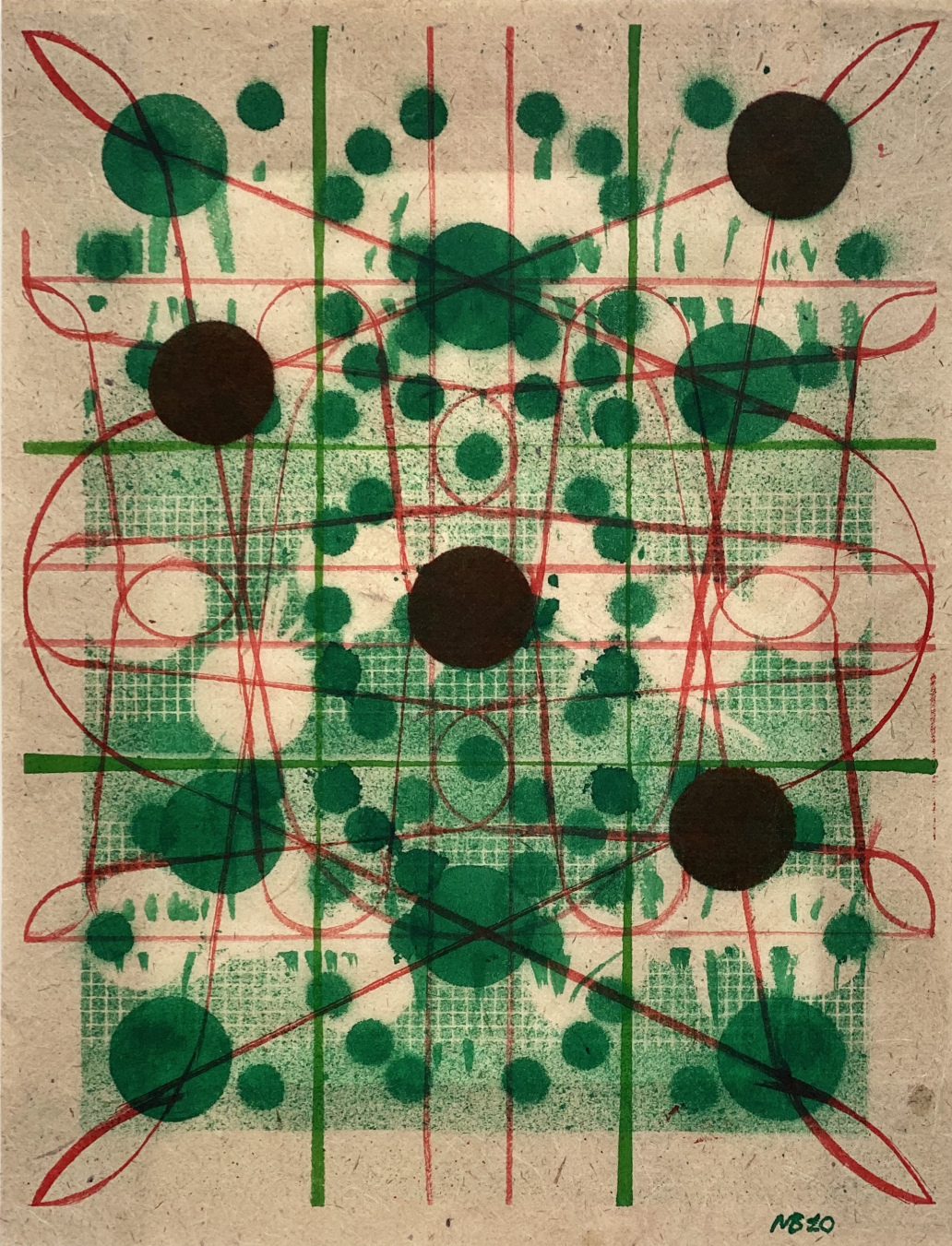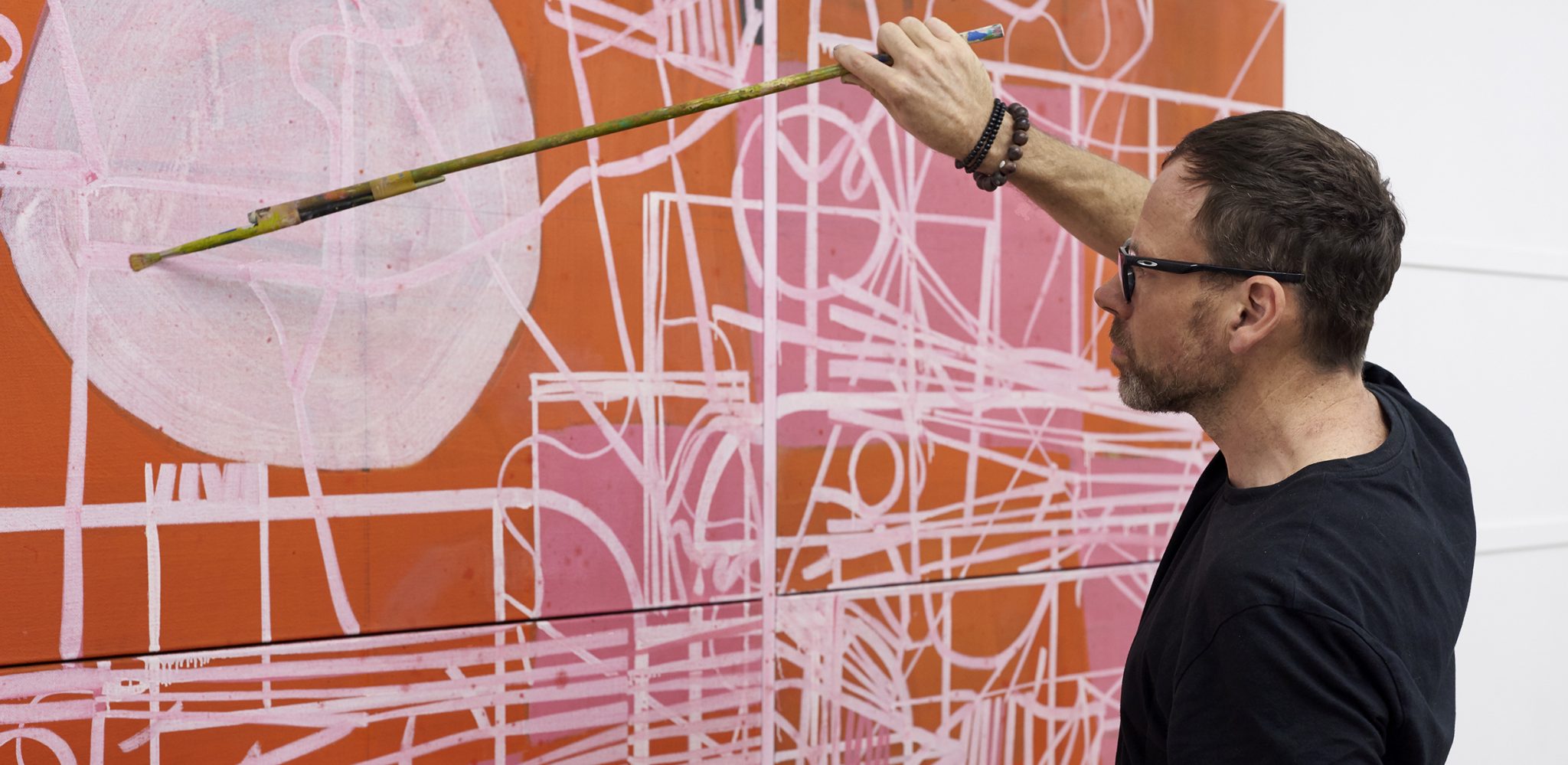British painter Matthew Burrows on creating an alternative economy for artists under lockdown
In March the British painter Matthew Burrows established the Artist Support Pledge, a hashtag that artists could use to sell work directly from Instagram. Each work had to be valued at £200/$200 or less, and if the artist succeeded in making £1,000 or the equivalent in sales, they promised to buy a work from another artist using the pledge. It has now spread across the globe, generated millions in sales and turned Burrows’s life upside down.
ArtReview How did you come up with the pledge?
Matthew Burrows It was on the morning of 16 March, the first day of lockdown in the UK, and I was sitting at my computer answering emails about forthcoming projects that were all being cancelled. Exhibitions, teaching work – everything was coming to an end. While this was happening, I could see on social media other artist friends who were saying the same thing.
It was like a tsunami of disbelief and despair that seemed to ripple across the artworld. Artists were in a position that perhaps they haven’t faced since the war, facing no income for at least three months. There wasn’t going to be any backup plan from the government anytime soon. I also knew that arts organisations were not in a position to help, because they were fighting for their lives too. We were on our own. I started to think what assets I had that might help me survive. Obviously one thing was art, but a particular type of artwork – the kind artists have lying around their studio that never gets into the mainstream market because it’s too small a value to make enough profit for a gallery to bother with. The other asset was a network I’ve had since 2008, when I set up a peer-mentoring programme. I played around with the economic model for the day, trying to figure out the £200–£1,000 relationship. I wrote it up, posted it on an Instagram account and asked people to join the hashtag. I think it was about eight o’clock in the evening or something, and before I went to bed I had sold a few works.
AR Not bad for a day’s work.
MB It wasn’t as if I thought I was going to help everybody, just myself and my immediate friends and colleagues. It was as ambitious as that really. Overnight I’d made £800, by lunchtime I’d made £1,000 and I was able to buy another artist’s work. So I emailed everyone I could, asking them to take part. By lunchtime, the Instagram notifications on my phone would not stop. A barrage of emails were arriving too. Then I didn’t leave my phone and computer for months. I was getting two messages a second from artists around the world, from Africa, Asia, America, and it went on like that for weeks. In the end, I just turned them off.

AR The hashtag has now been used almost half a million times.
MB We think it has generated around £70 million in sales globally, with 50 percent of the market in the UK, then it’s America, and then fairly evenly spread internationally. Some people go on it and sell right away, but normally it takes a bit of time for the algorithms to catch up with you. Once you start generating regular sales on it, we found people were making around £2,000 a month, but that they were also then making an additional £2,000 a month off the pledge. They were selling work that wasn’t on the pledge, work valued over £200, but also directly from the studio.
AR Generosity is inherent in the pledge, in that artists who sell five works promise to buy one in return.
MB I’ve been thinking a lot about other economic and social systems for years, and got really interested in prehistoric, preindustrial communities and how they evolved, and how they sustained one another. They were substantially more successful at being sustainable than industrial society has been. Hunter-gatherer society specifically had a couple of customs and social ideas that seemed to bind their ability to survive. One was that when you’re on a hunt, and if you get the kill, you don’t keep the meat, but have the honour of disposing of it. You prepare it, butcher it, then divide it out among your family, neighbours and friends. They then do the same, then they divide that up among their family and friends. The assets of the kill spread across the community and everyone gets fed.
Now it might not be perfect, it doesn’t always work, so they have another custom, which is that if you end up without any food, all you’ve got to do is go to the fireside of another family who’s eating and they are obliged to feed you. What if we can create an economy for artists that has implicitly bound into it an obligation to support one another, and to spread your assets? It wasn’t about getting rich, because at £200 a time it’s quite hard to get rich. Don’t get me wrong, there’s quite a few people doing really well on it, but it’s limited.
AR The pledge is a survival mechanism. It’s also profoundly democratic, removing the gatekeepers from the sales process.
MB I actually remember thinking this: it’s like the gatekeepers have left the gates. Everyone has gone home, galleries were battening down the hatches and waiting it out, but the artists did not have that luxury. It was as if the industry didn’t care. Not everybody, of course. Yet I think that withdrawal provided this amazing opportunity. I couldn’t have done this two years ago or whatever, people would’ve laughed at me, thought I’d gone mad. I don’t think anyone would’ve been brave enough, especially after you were already established with a gallery, a career.
AR You’re represented by Vigo. Did you have any pushback from galleries?
MB Given the scale of it, I’ve not really had any problems. I did have a few artists who told me their galleries had told them not to do it, because they’re worried about it affecting their market value. That’s ok, if those galleries can give that artist a living wage for the next six months, fine, tell them not to do it. But you’ve no right to tell them that they’ve got to be poverty-stricken for six months. They’re selling work that you’re never going to sell anyway. Most galleries, however, once they understood it, were understanding.


AR Tell me about the mentoring programme this grew from.
MB For the past ten or more years I’ve been interested in cultures of trust and generosity. I’ve approached this in quite a critical way, looking for ideas from sports science to neurology and prehistoric societies. Anything that I thought might unravel artists’ relationship to their work and to one another’s community. One of the things that became clear from the research is that if you develop a culture that is about the community, it’s much more effective than a culture that is about the individual. Which is not against individualism, but that hypercompetitiveness tends to close down ideas and close down discourse rather than open it up. The programme started with friends. We would meet up three or four times a year, slowly developing a community and an environment in which people can be robustly honest about their reality and work. For that to happen, you have to have a context of generosity. You have to give a bit more than is expected of yourself and allow somebody else to be honest, even if you don’t like what they’re saying. Then, probably about two years ago, I started getting people asking me about it, so I decided to show other people how we operate so that then they could go off into their groups and create these dialogues among themselves.
AR This sounds a lot like the atmosphere of the undergraduate crit, though that space is now clouded by the marketisation of education.
MB I’ve worked in education and become increasingly disillusioned with the sector. If you turn colleges into a business, you throw out what was good about our schools many years ago. Back then they could be shambolic, but that lack of professionalism allowed a freedom to flourish. Students were allowed to explore and to unravel and to make mistakes. It felt to me like we were pushing that out of the system.
AR What’s the future for the pledge? Has anyone from Instagram picked up on it?
MB We haven’t had anyone from Instagram, but Google Arts and Culture have been very supportive, from fairly early on actually. About two months in, they put me in contact with MIT Media Lab in the us. I spent a bit of time working with them, and we’ve come up with a mockup website that we hope to develop going forward, which can actually manage it better. It’ll still be on Instagram, but the site will manage things like the artists’ finances.
AR Have you actually been able to do any painting?
MB I hope to get into the studio next week! Currently it’s a fulltime job maintaining the integrity of the hashtag. Obviously, when it went global people didn’t always bother finding out what it really is. Keeping and emanating that level of information and making sure that people know the promise you implicitly make in using it takes a lot of effort and marketing. One of the things we looked into with MIT was how we create a technology that embeds in it those preindustrial ideas, a society that’s about sustainability and about equality. So much of our technology is actually not, it’s about silo-ing exclusivity, making a few people very wealthy. What I want to do is try and find technological advances that allow people to share assets rather than just heaping them on the already popular.
